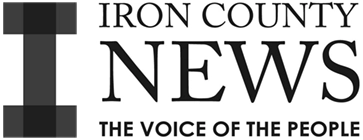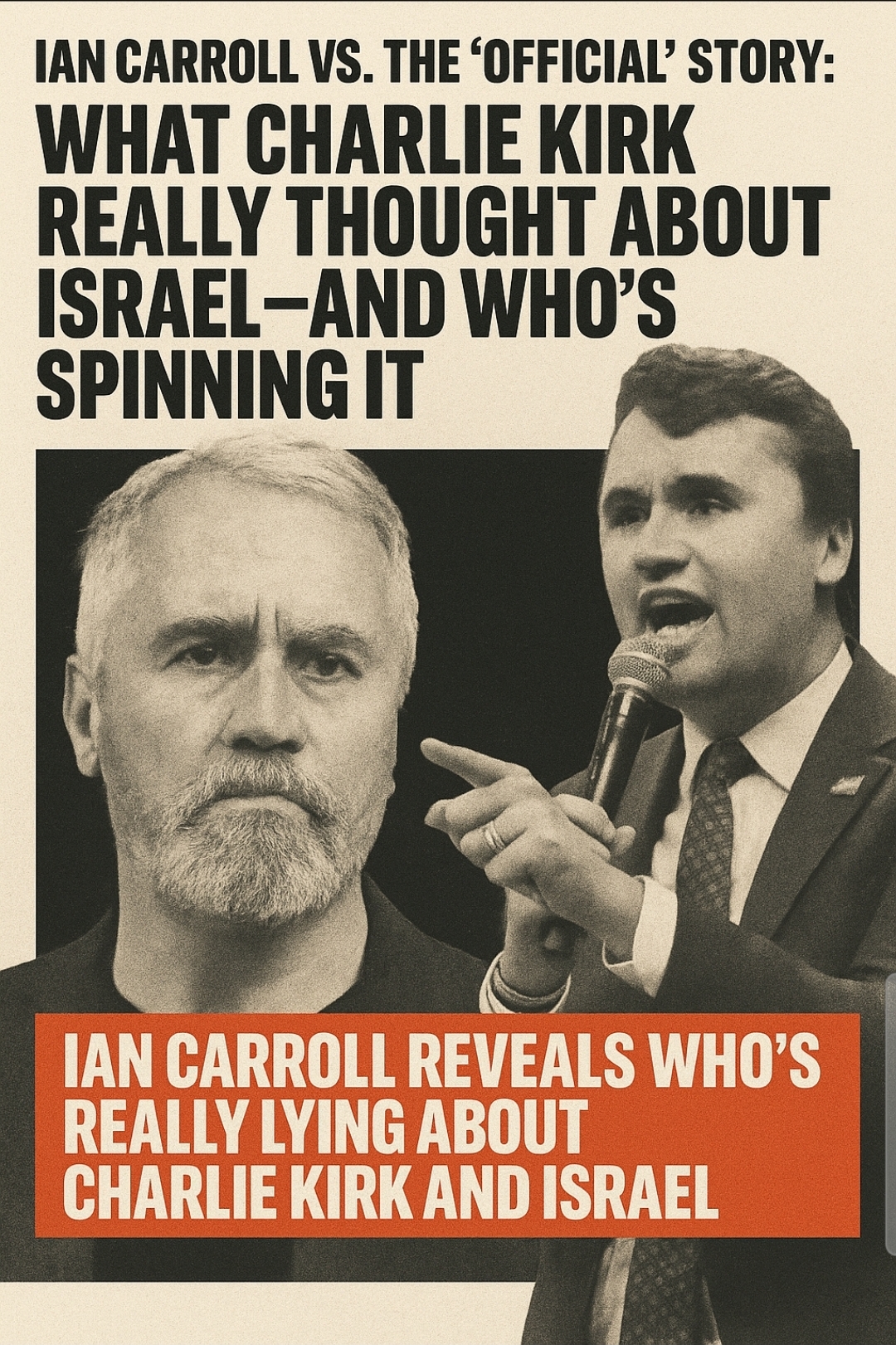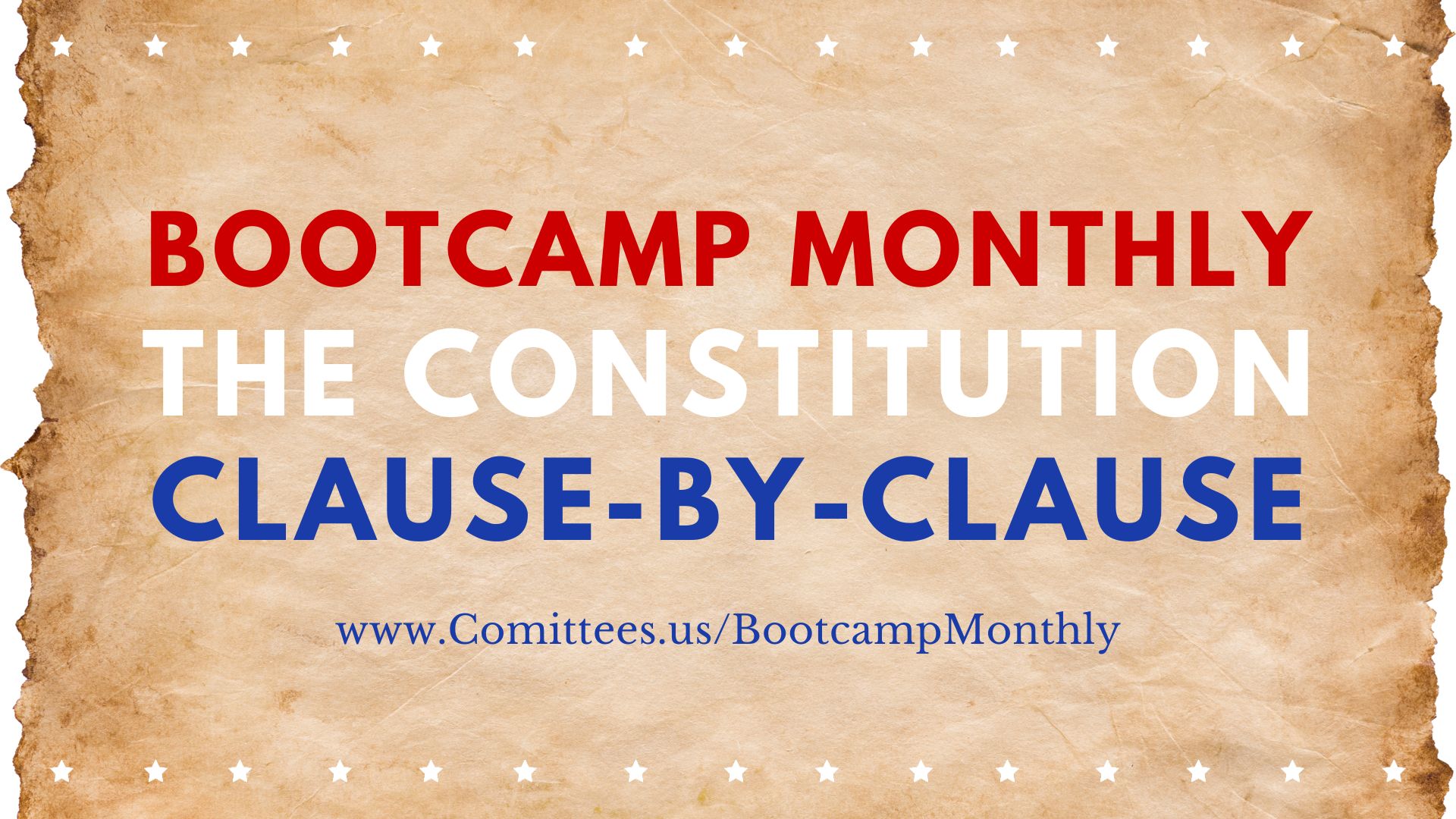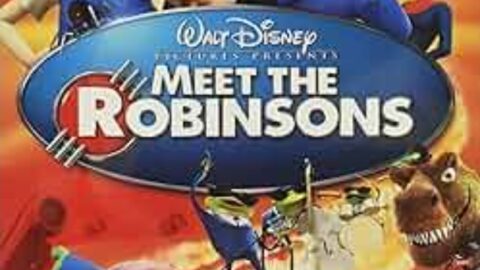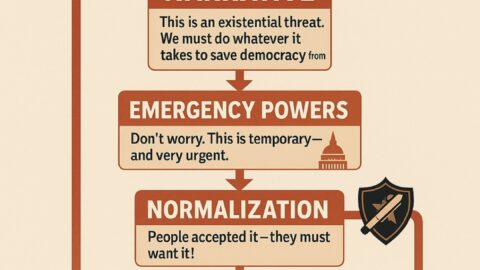The Liberty Vault conversation with Ian Carroll isn’t a whodunit. It’s a struggle over who controls the memory of Charlie Kirk—what he believed, why he platformed critics of Israeli policy, and how donor politics and faith shaped his public posture. Carroll’s core claim: attempts to canonize Kirk as an unwavering loyalist to the most hardline Israel positions omit a messier, more human reality—one in which Kirk was balancing donors, a changing youth base, and his own evolving thinking.
Preface: Why This Story Matters
When truth becomes dangerous to tell, storytelling becomes the weapon of choice.
The controversy surrounding Charlie Kirk’s legacy and his evolving views on Israel isn’t just about one man — it’s about the power to shape what the public is allowed to remember.
Since Kirk’s death, competing narratives have emerged. Some present him as an unwavering supporter of Israel; others suggest his private reflections had grown more complex, even critical. Journalist Ian Carroll has stepped into that contested space, questioning whether the “official” version of events is accurate — or carefully managed.
This story matters for five reasons.
- It’s About More Than Charlie Kirk — It’s About Who Controls the Narrative
When someone influential can no longer speak for themselves, their memory becomes political real estate. Carroll’s investigation challenges the machinery that rewrites history for ideological convenience, asking the uncomfortable question: Who benefits from controlling what we’re allowed to believe?
- It Reveals How Truth Is Managed
In an era of censorship, donor influence, and media echo chambers, truth isn’t destroyed — it’s edited. By tracing how narratives are framed, suppressed, or weaponized, this story exposes the quiet mechanisms that determine which opinions are “acceptable” and which are heretical.
- It Exposes the Pressure to Conform
Charlie Kirk’s journey embodied a larger struggle within the conservative and Christian movements — the tension between spiritual conviction and political expectation. If his evolving thoughts on Israel were distorted or silenced, it reveals how even truth-seeking individuals can be coerced into conformity for the sake of alliances, funding, or tribal unity.
- It’s a Test of Courage and Accountability
Ian Carroll’s investigation is not just a critique — it’s an act of moral courage. Challenging dominant narratives invites backlash, but it also preserves something sacred: the right to ask questions when power insists on silence.
Whether one agrees with Carroll or not, his willingness to follow evidence rather than fear helps keep public discourse alive.
- It Speaks to the War Over Conscience
At its core, this story forces us to confront the most fundamental question of all:
Can we pursue truth when it collides with power?
If the answer is no, then politics, journalism, and even faith become performance art — loyalty replacing conscience, and narrative replacing truth.
In that sense, the battle over Charlie Kirk’s story is really a battle over our own moral integrity — and whether we still dare to see things as they are, not as we are told they must be.
The Narrative Battle
- Why the rush to define Kirk? Carroll argues powerful figures moved quickly after the assassination to present Kirk as a pure, unconflicted defender of Israel. That depiction, he says, clashes with a record that includes platforming dissent (Tucker Carlson, Dave Smith), privately engaging critiques, and chafing at pressure from pro-Israel donors.
- The stakes: The American right is realigning on foreign policy. Younger conservatives are less receptive to automatic alignment with Israel. Whoever frames Kirk’s legacy influences where that realignment lands.
How Kirk’s Worldview Was Built
- Movement formation: Carroll’s sympathetic read begins with biography, not ideology. Kirk rose through a conservative ecosystem where support for Israel was ambient—from mentors to donors to media. People in that world were often generous, persuasive, and, in many cases, sincerely motivated by a Judeo-Christian moral frame.
- Religious overlay: For many Protestants (and some Catholics), scripture and modern geopolitics are braided together—even when that fusion is theologically contested. Carroll’s point is not to litigate theology; it’s to show how sincere faith can harmonize with political loyalty long before facts are interrogated.
October 7 Wasn’t the Whole Story
- Carroll’s provocation: He highlights early-October 2023 remarks where Kirk questioned institutional failures in Israel and hinted at “stand-down” suspicions—calling it a pivot point.
- The counterbalance (from the transcript host): Days later, Kirk publicly reaffirmed strong support for Israel and often maintained a pro-Israel line thereafter. If there was a change, it looked uneven—not a clean break.
The fair synthesis: Kirk’s post-October stance appears mixed—faith-rooted sympathy for Israel plus rising discomfort with leadership and policy. That’s not a conversion; it’s a tension.
Public Posture vs. Private Signals
- Publicly: Kirk defended Israel’s right to self-defense, cast doubt on Gaza war imagery, and pushed back on labeling the campaign as genocide. He also said things that angered critics (e.g., claims about Islam and Western civilization).
- Privately (and via bookings): He green-lit Carlson to “go full bore” on Israel and Epstein from the TPUSA stage. He debated and hosted critics. Dave Smith shared texts in which Kirk said he disagreed with “very little” of Smith’s argument after the Douglas Murray debate and explicitly rejected guilt-by-association tactics that blame mere critics of Israel for violent acts.
What that means: Kirk was neither Ben Shapiro nor Dave Smith. He was a mediator trying to make space for dissent without detonating his coalition.
The Donor–Base Squeeze
- Organizational reality: TPUSA is a donor-funded nonprofit that relies on wealthy patrons while mobilizing a youth activist base less hawkish than older conservatives.
- Carroll’s read: Kirk was wedged between big-ticket donors who expect message discipline and audiences who applauded heterodox voices. That structural bind explains much of his “in-between” positioning—perhaps more than any dramatic internal conversion.
Candace Owens as Catalyst
- Why she matters: Carroll credits Owens for forcing open the conversation—surfacing the reported Hamptons donor summit, urging Tucker and Smith to share what they knew, and keeping the focus on verifiable questions instead of speculative leaps.
- Method over mania: He praises her discipline—press where facts exist, ask pointed questions where they don’t. Even critics concede her work changed the tempo of the story and nudged allies to bring receipts (texts, timelines, corroborating anecdotes).
“Receipts” vs. Rebrand
- Receipts camp: Owens, Smith, Carlson, and others have put forward specifics: texts from Kirk, on-stage decisions, and accounts of donor pressure. These don’t prove a 180°, but they complicate the “unwavering loyalist” narrative.
- Rebrand camp: Carroll says political actors rushed to memorialize Kirk as a seamless ally and to imply that sharing private texts is somehow immoral. But the first emphatic attempt to fix the narrative, he notes, came from Netanyahu himself, with selective references (like a partial letter) and immediate blame-casting.
Key takeaway: This is a memory war. In a memory war, documentation matters more than declarations.
The Free-Speech Flashpoint
- Policy reaction: Proposals for new “speech laws” in the murder’s aftermath drew sharp criticism in the segment. Carroll calls them both contrary to Kirk’s ethos and politically tone-deaf, likely to galvanize conservative resistance—particularly among voices already concerned about censorship and “disinformation” frameworks.
- Movement effect: Clampdowns don’t quell suspicion; they validate it. Attempts to police acceptable speech tend to harden heterodox coalitions, not dissolve them.
What We Still Don’t Know
- Degree of ideological shift: Did Kirk’s late-stage openness reflect incremental reconsideration, or was it situational balancing? The texts suggest genuine engagement, not wholesale realignment.
- Donor dynamics: Which donors applied pressure, and how explicitly? What promises, if any, were demanded or withheld?
- Letter context: Without the full text, Netanyahu’s references remain selective. Full publication would clarify intent.
- Legacy ownership: Who ultimately gets to define Kirk’s view—his bookings and messages, or the posthumous branders?
The Most Charitable—and Most Honest—Reading
Charlie Kirk was a coalition builder in a volatile moment. He held a faith-anchored sympathy for Israel, increasingly questioned leadership and tactics, and tried to platform critics without blowing up a donor-dependent organization. He was not a mannequin for one camp or the other. He was a man in the middle of a movement that’s moving.
That’s precisely why his memory is contested. If younger conservatives keep drifting away from reflexive alignment, the story told about Kirk becomes a lodestar: either proof that conservative leaders can accommodate dissent, or a cautionary tale that deviation will be rewritten out of the official record.
Bottom Line
Ian Carroll’s contribution isn’t that he exposes a grand conspiracy. It’s that he punctures a too-tidy posthumous script. By foregrounding texts, stage decisions, donor dynamics, and Owens’ catalytic reporting, he shows what many suspected: Charlie Kirk’s final months weren’t a slogan. They were a negotiation—between conscience and coalition, faith and power, donors and the democratic noise of a rising generation.
Ian Carroll Reveals Who’s “Really Lying” About Charlie Kirk and Israel — A Point-by-Point Breakdown (Liberty Vault)
Below is a clean, neutral summary of the Liberty Vault transcript featuring Ian Carroll’s remarks about Charlie Kirk, Israel, and the post-assassination narrative war—organized claim-by-claim.
1) Setup: Who’s shaping the story?
- Carroll’s thesis: Powerful figures are racing to fix the public memory of Charlie Kirk as uniformly pro-Israel; he thinks that picture is incomplete.
- Why now: Candace Owens, Tucker Carlson, Dave Smith, and Max Blumenthal have surfaced anecdotes, texts, and reporting that suggest Kirk was wrestling with Israel policy and donor pressure in his final months.
2) Early Kirk context: How a worldview forms
- Path to influence: Carroll suggests Kirk rose inside a conservative milieu that was long aligned with pro-Israel advocacy; many mentors/donors in that space were generous and persuasive.
- Religious overlay: He argues a sincere Judeo-Christian framing shaped many conservatives; some believed supporting the modern Israeli state was a religious imperative.
3) October 7 and after: Was that an inflection point?
- Carroll’s take: He cites Kirk’s early-October 2023 comments (e.g., on PBD) hinting at institutional failure (“stand-down” suspicion), calling it the beginning of change.
- Counter-note in transcript: The host pushes back, noting that days after those remarks Kirk publicly reaffirmed strong support for Israel and largely kept that line for many months—so any “shift” looks uneven and late-emerging at best.
4) Public vs. private Kirk
- Public record cited in the segment: Kirk sometimes amplified hardline talking points (e.g., “Israel’s right to defend itself,” skepticism of Gaza visuals, etc.).
- Private friction (as alleged elsewhere and echoed here): Stories/claims that Kirk disliked Netanyahu, bristled at donor pressure, and allowed space for dissenting voices (Tucker, Dave Smith) to speak frankly on his stages.
5) Donor pressure & organizational bind
- Carroll’s framework: Kirk ran a donor-funded org (TPUSA) while leading a youth base increasingly skeptical of unconditional support for Israel.
- Implication: He had to balance donor expectations with audience sentiment—explaining his “in-between” posture (neither Ben Shapiro nor Dave Smith).
6) Receipts vs. rhetoric
- On “receipts”: The segment praises Owens/Carlson/Smith for sharing specifics (e.g., Smith reading private supportive texts from Kirk about Smith’s arguments after the Douglas Murray debate).
- Contrast: Carroll says pro-Israel narrative enforcers rely more on moral pressure and posthumous framing than comparable documentary details about Kirk’s private views.
7) Candace Owens’ role
- Catalyst: Carroll credits Owens for blowing open the donor-pressure story (e.g., Hamptons meeting) and for urging others (Tucker, Dave) to share what they know.
- Method: He praises her for sticking to verifiable questions/claims and avoiding overreach, while acknowledging some disagreements about specific angles.
- Risk: He worries she’s “put a target on her back” by challenging powerful interests.
8) Free speech flashpoint
- Policy reaction: The transcript criticizes proposals for new “speech laws” after Kirk’s murder, calling them antithetical to Kirk’s free-speech ethos and politically tone-deaf for conservatives “pissed and hurting.”
- Broader frame: Carroll thinks attempts to police online discourse will backfire, energizing critics and high-profile voices (e.g., Tucker) to speak even more openly.
9) The Netanyahu framing
- Carroll’s critique: He says Netanyahu immediately cast Kirk as an unwavering ally and blamed “Islamists,” which Carroll views as opportunistic and simplistic.
- Letter optics: He questions Netanyahu referencing a Kirk letter without offering full context, calling the portrayal potentially selective.
10) Where Carroll agrees/disagrees with others
- With Dave Smith: Carroll acknowledges Dave’s caution—“what evidence shows Israel did this?”—and accepts the distinction between who killed Kirk vs. what Kirk believed.
- With the host: He accepts that some claims of a dramatic, long-running shift are overstated; the movement looks more like late-stage friction than a full reversal.
11) What remains contested (per the segment)
- Degree of Kirk’s shift: Was he moving modestly, meaningfully, or mostly performing balance between donors and base?
- Interpretation of texts & bookings: Do supportive DMs and platforming dissent prove a change—or just openness to debate?
- Netanyahu’s letter narrative: Without fuller context, did it accurately represent Kirk’s final stance?
- Policy fallout: Will “speech law” pushes harden the right against narrative control efforts?
12) The segment’s bottom line
- Not a binary: The “Kirk was either 100% pro-Israel or had fully turned” framing is rejected. The portrait is of a figure in tension: faith-anchored sympathies for Israel, growing skepticism of power/donors, and a base moving away from reflexive alignment.
- Narrative struggle: Competing factions are racing to define Kirk’s legacy. Carroll argues the “pure loyalist” version omits inconvenient late-stage signals.
Quick takeaways
- Kirk’s stance: Complex and situational—publicly supportive, privately more questioning, especially about Netanyahu/donor pressure.
- Owens/Carlson/Smith: Provide specific anecdotes and texts that complicate the “unwavering ally” story.
- Carroll’s warning: Attempts to criminalize dissent or rush a single narrative are likely to backfire among conservatives and strengthen free-speech resistance.
